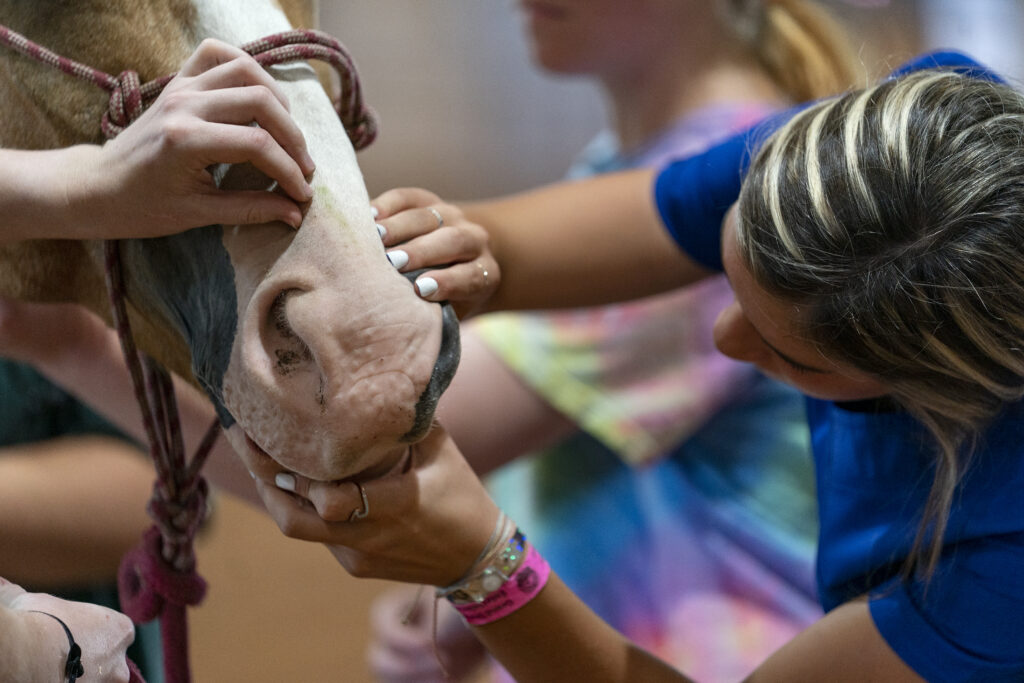The following discussion outlines steps to be taken to ensure the safety of horses in pastures following heavy rainfall events.
Soils
Depending on the soil type in the pasture some pastures may be safe for horses to return to almost as soon as the rainfall event ends. Soils that are sandy in nature, because of their high infiltration rates and low water storage capacity, will support animal traffic more rapidly than clay soils. If the pasture is comprised of clay soils, it may be a good idea to keep horses out of the pasture for a week or so after the rainfall event ends to reduce the potential for surface compaction and prevent horses from bogging in the soft soil.
Forages
Soft, waterlogged soils may increase the horse’s ability to pull plants from the soil, thus destroying valuable forage plants. Ensure the soil has initiated drying and plants are firmly anchored in the soil prior to returning horses to the pasture. In the event of extended submersion, water will need to runoff, infiltrate, or evaporate and allow plants to initiate recovery from being submerged for an extended period of time. Make sure plants have regained a dark green color, indicating a return to optimal photosynthesis, before subjecting forage plants to the close harvesting associated with horse grazing. Because of the potential delay in returning the horses to the pasture, owners and managers should have alternate sources of nutrition and places for exercise available.

Hazardous Materials
During flood events, high water can transport unwanted materials into the pasture. Prior to returning horses to the pasture, scout the pasture for any items such as boards with nails, sheet metal, fence material, or other objects that may puncture or cut a horse. Also, be sure there are no potentially hazardous materials such as propane bottles, gasoline cans, or other flammable materials that may have inadvertently floated into the pasture. If any unfamiliar containers are located in the pasture, ensure no hazardous materials have been spilled. Typically, flood waters dilute hazardous materials to a safe level, but be on the lookout for any concentrations of such substances.
Disease
Horses forced to stand in flooded pastures are prone to develop thrush, sole abscesses and greasy heel. Frequent observation and care of feet are critical in these environmental conditions. Horses that consume moldy hay or feed as result of flooding conditions may be prone to digestive upset (colic). As the water recedes and stagnant areas remain, diseases associated with mosquitos and midges (i.e. West Nile Virus, irritation and allergies associated biting insects) are more likely. It is very important that all horses’ tetanus vaccinations remain current. Horses often experience puncture wounds in muddy and poorly drained areas, these wounds may go unnoticed until it is too late. Check with your veterinarian about other diseases that may be common in your area and recommended methods of protection.
Summary
Flood waters can transport more than just water across the landscape and horse owners should carefully inspect their pastures prior to turning horses back into the pasture for exercise or grazing. If you have questions, contact your local Texas A&M AgriLife Extension agent or specialist.
Produced by the TAMU Department of Animal Science, The Texas A&M University System Additional information on animal science topics can be found on the Web at http://animalscience.tamu.edu.
